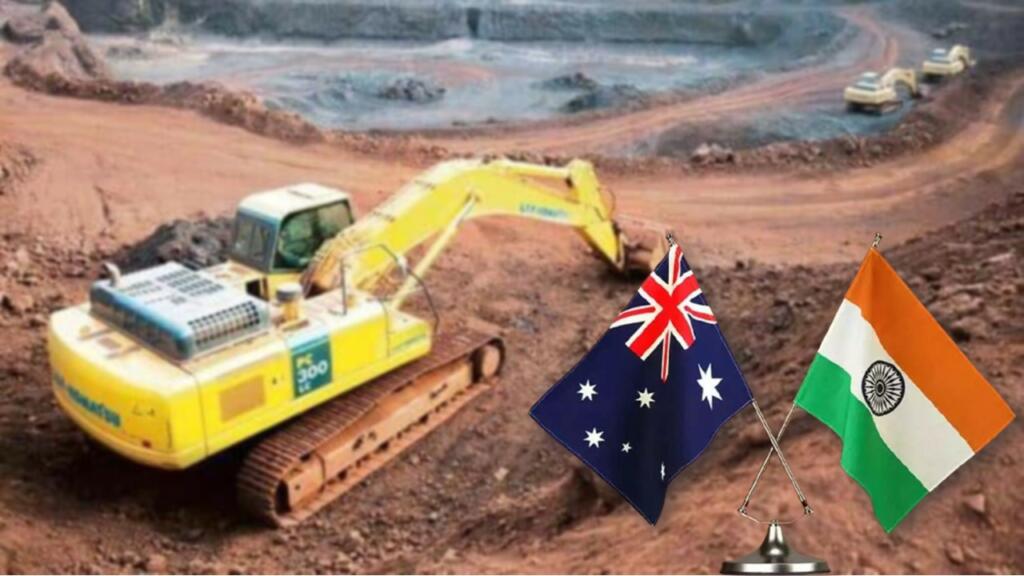India Australia lithium mines: The Gavaskar Border Trophy is not the only source that creates strong emotions in both India and Australia. In fact, both democracies are aligning their foreign policies and assisting each other’s development in one way or another. In addition to the quadrilateral security dialogue, that is, both of them are now pooling their resources to counter China in the area of critical minerals, particularly lithium extraction and mining.
India will tap lithium directly from Australian mines
India has set an ambitious target of reaching net zero emissions by 2070. For that, the Modi government has been giving faster impetus to renewable energy and even exploring for mines in foreign countries. It has gained another success as it is very well on the verge of tapping critical minerals, including lithium and cobalt, from five mines in Australia.
Recently, the Minister for Resources and Northern Australia, Ms. Madeleine King, revealed that under the India-Australia Critical Minerals Investment Partnership, India had identified two lithium mines and three cobalt mines.
India is considering processing these minerals in Australia rather than exporting them back to the country. The reason for this decision is the high expense incurred and difficulties with waste disposal within India. However, reports add that a definite plan has not been reached at this moment in time.
Also Read: India’s Lithium Expedition: Liberating India from Dependence
Ms. Madeleine said, “Processing of critical minerals in India would be difficult as it would be expensive, and a bigger challenge would be to dispose of the waste.” Let me tell you why this partnership is significant for both nations.
Notably, Australia is sitting on huge critical mineral resources. The Australians are a major producer of these minerals. It has the world’s second-largest cobalt and fourth-largest deposits of rare earths. But why then are they seeking India’s assistance and wanting India’s expertise in this sector? Despite the abundant resources in Australia, the Australian government finds it hard to use these critical minerals in battery manufacturing within the nation.
Highlighting this fact, Minister Madeleine stated that Australia does not have a car manufacturing unit. She also added that the Indian companies had sent an expression of interest that would allow them to take the offtake. Now, before moving further, let us understand what is offtake.
An offtake agreement is a contract that the buyer, also known as the offtaker, and the seller make to exchange products before they are produced. It is often employed for large-scale natural resource development projects like mining, oil, and gas production.
India-Australia partnership for minerals
The India-Australia Critical Minerals Investment Partnership was signed earlier between Union Minister Pralhad Joshi and Australian Minister Madeleine King. The agreement was signed earlier this year during an Indian Minister’s visit to Australia.
Back then, Parliamentary Affairs, Coal, and Mines Minister Pralhad Joshi also visited Western Australia last year. He also visited Tianqi Lithium Energy’s Kwinana Lithium Hydroxide Refinery. Reports also highlight one crucial meeting at an industrial conference in Australia. The meeting took place between the officials of Ola Electric Mobility Pvt. Ltd. (OEM) and Raj Surendran, who is the Chief Executive Officer (CEO) of Tianqi Lithium Energy Australia.
Earlier, the OEM signed a memorandum of understanding (MoU) with the Tamil Nadu government for a cell manufacturing plant in Krishnagiri.
Mr. Surendran said, “There is potential for up to four trains at the Kwinana refinery, each with a production capacity of 24,000 metric tonnes of lithium hydroxide per year. These will be produced using spodumene mined and concentrated in Western Australia. With all four trains in operation, the plant will contribute eight to 10 percent of global lithium supply.” He added that the plant will contribute to almost 8 to 10 percent of global supplies of lithium.
Australia has been seeking better access to India’s agricultural markets. In exchange, the Australian government has hinted at giving India greater access to invest in mining and extract critical minerals that are used in battery manufacturing. Further, the Australian government is also considering India’s requests for a more favourable visa policy.
As per the Economic Cooperation and Trade Agreement (ECTA) between India and Australia, tariffs have already been significantly reduced by both nations in January this year. This has resulted in the entry of nearly 2.5 billion Australian dollars’ worth of Australian goods at lower tariffs.
Also Read: India makes an aggressive push for mining lithium and cobalt abroad
Lithium demand soars worldwide
The sharp increase in demand and the forecast of shortages of critical minerals have caused a rise in the prices of every primary metal that is used to produce batteries. On that line, this tweak in demand and the shortage forecast have also increased the forecast price for lithium-ion battery packs.
As per available data, the prices of lithium, nickel, and cobalt have increased by 499%, 117%, and 56%, respectively, between December 2021 and December 2022. It is worth nothing that battery pack material costs somewhere around 50% to 70% of the total battery pack prices. And critical minerals are a key contributor to these battery packs.
In the recent past, the Indian government has been striking the right chords, be it the discovery of lithium reserves within India or outside in nations like Argentina or the recent one in Australia. It is to be noted that lithium has its own drawback. In addition to ticking all the necessary boxes and not letting China dominate the lithium-ion battery and EV sectors, India is on the right path to finding alternate renewable energy sources, with hydrogen fuel cells being the premium among them.
Support TFI:
Support us to strengthen the ‘Right’ ideology of cultural nationalism by purchasing the best quality garments from TFI-STORE.COM
